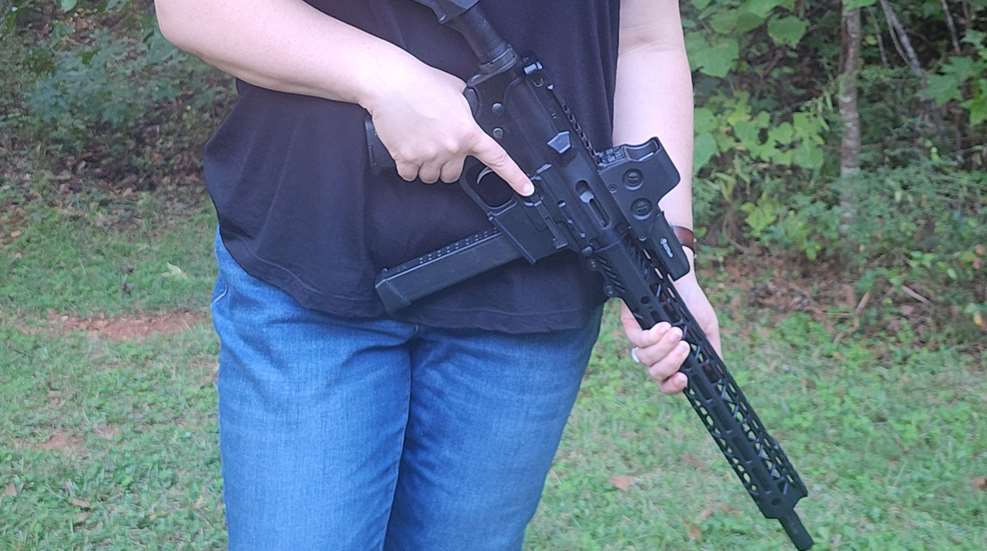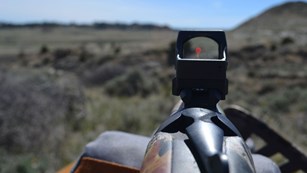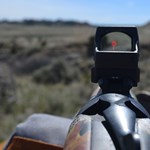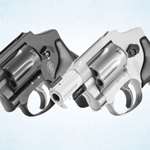
The gun world abounds with opinions about the best firearm for home defense. Shotguns, semi-automatic rifles, and handguns all have their place, and each has pros and cons depending on your living situation. There’s no one right answer that applies to everyone.
I covered this topic myself a while back, but there’s another option we didn’t go over in that article, a sort of hybrid firearm that might suit your needs perfectly: a pistol-caliber carbine.
PCCs, as they are commonly called, are just what they sound like: a lightweight rifle (carbine) that fires a pistol caliber cartridge. PCCs have been around since the 1870s, and they were popular in the Old West as ranch guns, typically built in a lever-action format. These days, some manufacturers are still making these cowboy-style guns, but more commonly, you’ll find modern PCCs built on a semi-automatic platform firing 9 mm ammunition.
This kind of PCC offers the advantages of a long gun combined with the more self-defense-suited ballistics of a 9 mm:
Penetration Concerns
Many homeowners avoid an AR-15 in a larger caliber, such as the common .223 Rem., for home defense because they worry about overpenetration—bullets with high velocity and energy penetrate too many walls, which can be a serious problem for apartment dwellers and anyone who has kids sleeping in another room. Case in point: The .223 leaves the muzzle at about 3,000 feet per second (fps) with around 1,250 ft./lbs. of energy. In contrast, the 9 mm Luger has a drastically lower muzzle velocity of around 1,250 fps with a mere 439 ft./lbs. of energy. There are a lot of ballistic factors in play here (like bullet design and barrel length, which we’ll get to), but generally speaking, less energy means less overpenetration concern.
The 9 mm is a much shorter-range cartridge, by design, which makes it ideally suited for self- and home-defense. But it’s usually shot out of a handgun, which has its home-defense drawbacks, like …
Control and Handling
Shooting a shoulder-mounted gun will always be more stable and accurate than shooting a handgun. The gun has more points of contact with your body and your hands, and a longer gun is just more easily controlled by the shooter. Because the gun is heavier than a handgun, you’ll also have less recoil/muzzle rise. So putting the 9 mm in a long-gun format automatically means you’ll shoot it more accurately. At the same time, PCCs can be lighter and overall smaller than a carbine chambered in a larger caliber. As long as the barrel is 16 inches or longer and the overall length of the gun is 26 inches or longer, it can be classified as a rifle. Shorter than that and it’s a pistol (which will need a brace if you want to shoot from the shoulder; a complicated topic) or a short-barreled rifle (SBR), which are subject to additional regulations and taxes and aren’t legal in all states.
Because most modern PCCs are built on or modeled after familiar platforms like the AR-15 or the Ruger 10/22, you are likely already familiar with the controls and handling of the gun if you own something similar. It’ll be lighter than a standard AR and often accepts standard AR accessories. Many models also accept common handgun magazines, so consider what you already own if the ability to interchange magazines is important to you.
Pros and Cons of That Longer Barrel
Because you’re firing the ammo out of a longer barrel, you’ll have less noise and muzzle flash—a real factor in a dark, quiet home when you probably didn’t have time to put in ear protection—than you would out of a handgun. That’s great, but the longer barrel also comes with some drawbacks to consider.
Internal ballistics and terminal ballistics can vary because of the longer barrel, typically leading to more velocity out of a PCC than you’d get out of a pistol. Standard 9 mm ammo is designed to function in a handgun with a much shorter barrel. The projectiles are specifically optimized to expand reliably at a certain velocity, and when that velocity is higher than expected, you can run into problems with expansion. That might mean a projectile punches a clean hole through a threat rather than expanding, and that essentially means less “stopping power.” Some ammo might not even run smoothly in a semi-auto PCC.
Many people tout “you can use your regular carry ammo!” as a benefit to a PCC, but this isn’t necessarily true thanks to that velocity difference. You’ll have to sight it in and do a lot of shooting, even on ballistics gel, to be certain that the 9 mm rounds you trust in your concealed-carry gun will function just as reliably in your PCC, and you might find that heavier projectiles perform better. Better yet, several companies are making 9 mm ammo designed to be shot out of longer barrels: Federal Syntech PCC, Killough Shooting Sports PCC, Black Dot PCC and others are designed for PCCs, but they’re for competition and range use, not for self-defense. This isn’t a huge market yet, but a few companies are making defensive 9 mm rounds optimized for the longer barrels of PCCs: Leigh Defense 9mm Defense Me+P Carbine Specific and Speer Gold Dot Carbine are two examples.
If you’re still looking for the perfect home defense firearm, you have a lot of factors to consider, but give a pistol-caliber carbine a look. It can offer the reduced energy and velocity of a 9 mm handgun in a much more easily controlled platform that’s still relatively lightweight and simple to operate and maneuver.















































